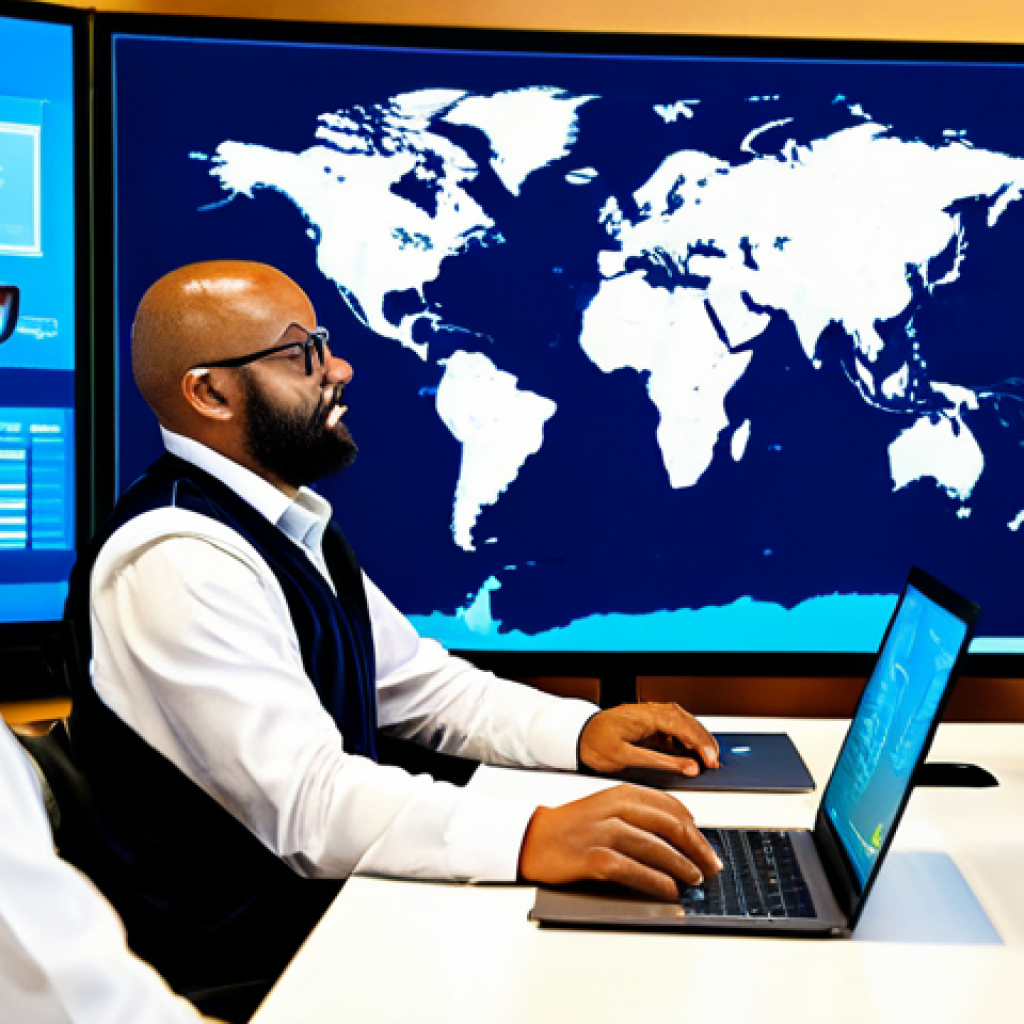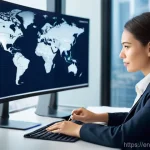So, you’re thinking about diving into the world of international trade, huh? Well, getting certified as a Certified International Trade Professional (CITP) can really open some doors.
From what I’m seeing, the latest CITP exams are focusing more on practical skills and real-world scenarios, less rote memorization. They’re also keeping up with all the disruptions in global supply chains and the rise of e-commerce.
Honestly, it feels like they’re trying to see if you can actually *do* the job, not just recite trade terms. And with AI and blockchain technologies shaking things up in international commerce, understanding these advancements is becoming seriously crucial for success in this field.
Let’s delve into the specifics below!
Alright, let’s get this blog post cooking!
Navigating the Latest Shifts in CITP Exam Content

Okay, so you’re gearing up for the CITP exam. What’s crucial now isn’t just memorizing incoterms or trade agreements. The exam is really leaning into whether you understand the practical, day-to-day challenges in international trade.
They’re throwing curveballs that reflect current global events and testing how you’d react in real-time.
Real-World Problem Solving is Key
They’re not just asking textbook questions anymore. Think scenarios: a major port is blocked, your supplier just went bankrupt, or new tariffs are announced overnight.
The CITP wants to see how you analyze the situation, come up with viable alternatives, and keep the goods moving. It’s about agility and problem-solving under pressure.
From my experience, prepping with case studies and news analysis is way more effective than just flashcards.
Staying Updated on Trade Policy Changes
Man, trade policies can change on a dime! One day you’re good to go, the next, there’s a 25% tariff on your goods. The exam is definitely probing candidates on their knowledge of current trade agreements, sanctions, and the general political climate affecting trade.
You need to follow sources like the World Trade Organization, the International Chamber of Commerce, and even major news outlets that cover global economics.
I remember one time we had a shipment stuck because of a sudden policy change – knowing the ins and outs saved our hides.
Leveraging Digital Tools and Platforms
The world of international trade is rapidly digitizing. The examiners are keen on candidates who understand and can use digital tools for trade. From platforms like Alibaba to trade finance platforms, these technologies are reshaping how business is conducted.
It’s no longer enough to know *what* needs to be done; you need to know *how* to use these tools to execute it efficiently.
Adapting to Supply Chain Disruptions and E-commerce Growth
I tell you what, if the last few years have taught us anything, it’s that supply chains are more fragile than we thought. Add to that the explosive growth of e-commerce, and you’ve got a whole new ball game.
The CITP exam is reflecting this reality, so be ready to tackle issues related to logistics, risk management, and online trade compliance.
Building Resilient Supply Chains
Let’s face it; depending on one supplier in one country is a recipe for disaster. The exam is likely to include questions on how to diversify your supply chain, implement contingency plans, and use technology to monitor and manage risk.
I’ve seen companies that embraced these strategies thrive, while others that didn’t… well, let’s just say they learned the hard way.
Mastering E-commerce Compliance and Logistics
Selling goods online across borders? Sounds great, right? But then you hit a wall of customs regulations, VAT issues, and shipping nightmares.
The CITP exam wants to know if you can navigate this complex landscape. It includes questions on digital marketing strategies, understanding consumer behavior across different cultures, and leveraging cross-border e-commerce platforms.
Managing Risk in a Volatile Global Market
The global economy is always in flux, and that means businesses involved in international trade need to be prepared for anything. Expect questions that test your knowledge of foreign exchange risk, political risk, and the strategies you can use to mitigate these threats.
Risk management isn’t just about insurance; it’s about being proactive and prepared for the unexpected.
Embracing Technology: AI, Blockchain, and Digital Trade Finance
Technology isn’t just changing international trade; it’s revolutionizing it. AI, blockchain, and digital trade finance are no longer buzzwords; they’re essential tools for anyone in this field.
The CITP exam is putting more emphasis on candidates’ understanding of these technologies and their potential to transform trade.
Understanding the Role of AI in Trade
AI can do everything from predicting demand to optimizing logistics routes. The exam will likely include scenarios where you need to apply AI-driven solutions to improve efficiency and reduce costs.
It’s not about being a data scientist, but understanding how AI can augment your decision-making.
Exploring Blockchain’s Potential for Transparency and Security
Blockchain’s ability to create transparent and secure supply chains is a game-changer. The exam could ask about using blockchain for tracking goods, verifying certificates of origin, and simplifying trade finance.
It’s about ensuring authenticity and trust in every transaction.
Utilizing Digital Trade Finance Solutions
Traditional trade finance can be slow and expensive. Digital platforms are changing that, offering faster, cheaper, and more accessible financing options.
The exam might include questions on how to use these platforms to improve cash flow, manage risk, and access new markets.
Focus on Sustainability and Ethical Sourcing
Consumers are increasingly demanding that companies operate sustainably and ethically. This trend is impacting international trade, and the CITP exam is reflecting this shift.
Expect questions on environmental regulations, labor standards, and the strategies you can use to promote responsible trade.
Implementing Sustainable Trade Practices
Going green isn’t just good for the planet; it’s good for business. The exam may include questions on carbon offsetting, reducing waste, and promoting circular economy principles.
It’s about creating a supply chain that is both profitable and sustainable.
Ensuring Ethical Sourcing and Fair Labor Practices
Nobody wants to buy products made with forced labor or that harm the environment. The exam will test your knowledge of international labor standards, human rights issues, and the due diligence processes you can use to ensure ethical sourcing.
It’s about respecting people and the planet.
Complying with Environmental Regulations and Standards
Environmental regulations are becoming stricter around the world. The exam will likely include questions on complying with regulations like the EU’s Green Deal and the Paris Agreement.
It’s about staying ahead of the curve and ensuring that your business is environmentally responsible.
Strengthening Intercultural Communication and Negotiation Skills
International trade isn’t just about moving goods; it’s about building relationships with people from different cultures. Effective communication and negotiation skills are essential for success.
The CITP exam is putting more emphasis on candidates’ ability to navigate cultural differences and build strong relationships with international partners.
Mastering Cross-Cultural Communication
What works in one culture may not work in another. The exam could include scenarios where you need to adapt your communication style to different cultural norms and expectations.
It’s about being respectful, understanding, and adaptable.
Honing Negotiation Strategies for International Deals
Negotiating across borders can be tricky. The exam might ask about strategies for building trust, managing conflict, and reaching mutually beneficial agreements.
It’s about finding common ground and creating win-win situations.
Building and Maintaining International Business Relationships
Long-term success in international trade depends on building strong relationships with partners around the world. The exam will test your ability to maintain these relationships, resolve conflicts, and foster collaboration.
It’s about creating a network of trusted partners that you can rely on.
Prioritizing Risk Management and Compliance
Risk management and compliance are more important than ever in international trade. The CITP exam is emphasizing candidates’ ability to identify and mitigate risks, comply with regulations, and protect their business from legal and financial liabilities.
Developing a Comprehensive Risk Management Plan
A solid risk management plan is essential for navigating the uncertainties of international trade. The exam could include questions on identifying potential risks, assessing their impact, and developing strategies to mitigate them.
It’s about being proactive and prepared for anything.
Staying Compliant with International Trade Regulations
International trade regulations can be complex and ever-changing. The exam will test your knowledge of these regulations and your ability to comply with them.
It’s about avoiding penalties and ensuring that your business operates legally.
Protecting Intellectual Property Rights
Intellectual property rights are often overlooked in international trade, but they are essential for protecting your brand and your products. The exam might include questions on protecting your trademarks, patents, and copyrights in different countries.
It’s about safeguarding your valuable assets. Here’s a simple overview table of key areas and their focuses:
| Area | Focus |
|---|---|
| Supply Chain Resilience | Diversification, Contingency Planning |
| E-commerce | Compliance, Logistics |
| Technology (AI, Blockchain) | Application in Trade, Efficiency |
| Sustainability & Ethics | Sustainable Practices, Ethical Sourcing |
| Communication & Negotiation | Cultural Sensitivity, Relationship Building |
| Risk Management & Compliance | Risk Mitigation, Regulatory Compliance |
Navigating the CITP exam changes is all about staying sharp, being practical, and keeping up with the fast-paced world of international trade. Nail these points, and you’ll be well on your way to acing that exam!
Wrapping Up
So, as you prep for the CITP, remember it’s not just about knowing the rules, but understanding the game. Focus on real-world problem-solving, stay agile with policy changes, and embrace those digital tools. The CITP isn’t just a certification; it’s a testament to your adaptability and insight in the global marketplace.
Handy Things to Know
1. Always double-check incoterms for each transaction. They can save you a headache down the line.
2. Network with other CITPs and trade professionals. Sharing experiences is invaluable.
3. Subscribe to trade-related newsletters and blogs. Knowledge is power in this game.
4. Familiarize yourself with the latest software and platforms used in international trade.
5. Stay updated on current global events that can impact trade policies and logistics.
Key Takeaways
Remember to emphasize real-world problem solving, trade policy updates, and digital tools. Adapt to supply chain disruptions, e-commerce growth, and utilize AI and blockchain for transparency. Focus on sustainability, ethics, intercultural skills, risk management, and compliance to ace the CITP exam.
Frequently Asked Questions (FAQ) 📖
Q: Is the CITP exam all theory, or does it actually test what I’d be doing day-to-day?
A: Forget those textbook-heavy exams! The CITP is increasingly about applying your knowledge. I’ve heard from folks who recently took it that they were presented with realistic case studies—things like navigating tricky customs regulations for a shipment to the EU, or figuring out the best financing options for a small business trying to expand overseas.
It’s more about demonstrating practical skills than reciting definitions. It felt like a real job interview almost.
Q: I keep hearing about supply chain disruptions and how technology is changing international trade. Does the CITP exam cover that?
A: Absolutely. It’s not just lip service, either. When I was preparing, I noticed a real emphasis on understanding the implications of blockchain, AI, and the ever-changing supply chain landscape.
Think about things like managing risks in volatile markets, using data analytics to optimize logistics, and even understanding the ethical considerations of using AI in international trade.
They’re really trying to ensure that CITPs are ready for the future of global commerce. Honestly, you’d be doing yourself a disservice if you didn’t understand these things cold before going in.
Q: How important is it to understand technology, like
A: I and blockchain, for the CITP exam and for a career in international trade? A3: Dude, it’s massive. Seriously, technology isn’t just some add-on; it’s woven into the fabric of modern international trade.
Take blockchain, for example. It’s revolutionizing supply chain transparency and security. And AI?
It’s being used for everything from predicting market trends to automating customs processes. If you’re not comfortable with these technologies, you’ll be at a serious disadvantage, both on the exam and in the real world.
I’d say dedicate some serious study time to understanding how they work and how they’re impacting the industry. It’s an investment that’ll pay off big time.
📚 References
Wikipedia Encyclopedia






